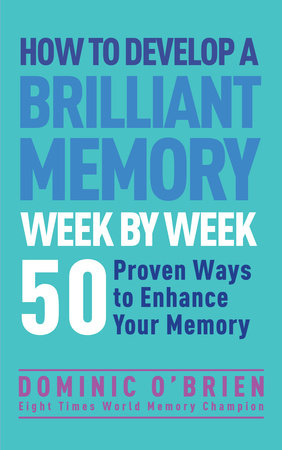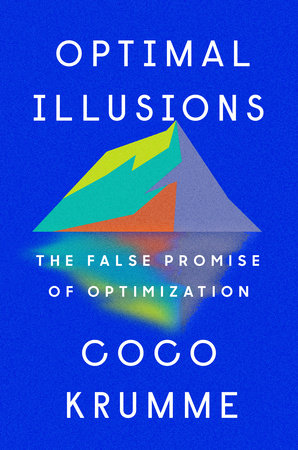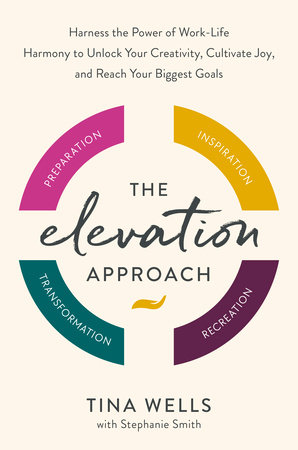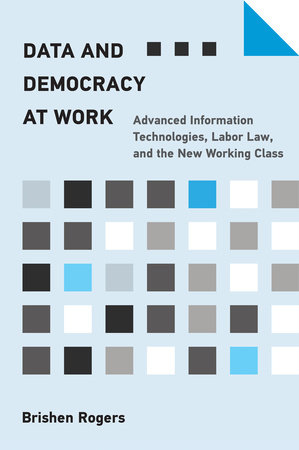Quick Summary
One Sentence Summary
“How to Develop a Brilliant Memory Week by Week” by Dominic O’Brien provides practical and systematic techniques for enhancing memory skills over a period of weeks.
Big Idea
The big idea behind O’Brien’s book is that anyone can develop an extraordinary memory through consistent practice and employing specific techniques, transforming memory from a mundane faculty into a powerful tool.
Five Key Ideas
- Memory Palaces: O’Brien introduces the concept of memory palaces, encouraging readers to create visual and spatial associations for information retention.
- The Journey Method: This method involves linking information to familiar routes or journeys, making it easier to recall.
- The Dominic System: O’Brien shares his own system, which involves assigning images to numbers, aiding in the memorization of long sequences.
- Memory Exercises: Each week, the book provides exercises and challenges to progressively improve memory.
- Practical Applications: O’Brien emphasizes applying these techniques in daily life, from remembering names to learning new languages.
Actionable Advice
Begin with simple exercises and progressively challenge yourself. Establish a daily routine for practicing the techniques, and apply them to practical situations like remembering shopping lists or important dates.
About the Author
Dominic O’Brien is a British mnemonist and an eight-time World Memory Champion. He is renowned for his memory techniques and has authored several books on the subject.
Read Next
For further exploration into memory enhancement, consider “Moonwalking with Einstein” by Joshua Foer, which delves into the world of competitive memorization, or “The Memory Book” by Harry Lorayne and Jerry Lucas, which offers additional mnemonic devices and techniques.
In Depth
Memory Palaces
Dominic O’Brien’s book “How to Develop a Brilliant Memory Week by Week” puts a significant emphasis on the concept of Memory Palaces. This technique, also known as the Method of Loci, is about creating a mental space, a ‘palace’, where you can store information in various ‘rooms’ or locations.
Imagine your home. Each room has its distinct features, right? O’Brien encourages readers to use such familiar spaces as frameworks for storing information. The idea is to place items you want to remember along a path through this space. The more vivid and unique the imagery, the better the recall.
One detailed example from the book involves memorizing a shopping list. O’Brien suggests taking a familiar route through your house and placing each item on the list at different locations. For example, imagine smearing butter on the door, or finding a fish swimming in your bathtub. These bizarre images stick in your memory, making it easier to recall the list later.
O’Brien explains:
“By placing vivid, sensory images at points along a journey, we anchor information in a way that is far more memorable than mere rote learning.”
Using Memory Palaces effectively requires practice. The book guides readers through this process, starting with simple exercises and gradually increasing complexity. The technique can be scaled up, from remembering short lists to memorizing decks of cards or complex data.
The beauty of Memory Palaces lies in their versatility. They can be adapted to suit different types of information and various learning styles. Whether you are a student trying to remember historical dates or a professional memorizing a presentation, this technique can be tailored to fit your needs.
O’Brien’s approach is not about overhauling your memory overnight. It’s about building and expanding your mental architecture, week by week. The Memory Palace is not just a technique; it’s a skill that grows and evolves with practice.
Through this key idea, O’Brien not only offers a tool for memory improvement but also invites readers to engage their creativity and imagination. The process of building and using Memory Palaces can be enjoyable and deeply personal, making the journey towards a better memory not just effective, but also engaging and fun.
The Journey Method
The Journey Method, also highlighted in Dominic O’Brien’s book, is a powerful memory enhancement technique. It involves linking pieces of information to a familiar route or journey. This method leverages the power of spatial memory, which is inherently strong in humans.
To use this method, you first choose a journey you know well. It could be the route from your bedroom to the kitchen or your daily commute. Then, you mentally place the items you want to remember along this route. Each item gets associated with a specific landmark or spot along the way.
O’Brien provides a detailed example involving memorizing a list of historical events. He suggests selecting a familiar journey, perhaps a walk through your neighborhood. At the first stop, you might visualize Julius Caesar sitting on your neighbor’s fence. At the next stop, imagine Christopher Columbus steering his ship in your local pond. The absurdity of these images makes them memorable.
O’Brien explains the effectiveness of this method:
“Our spatial memory is exceptionally reliable. Linking information to a journey exploits this strength, turning abstract data into a memorable path.”
Like the Memory Palace technique, the Journey Method works best with vivid, unusual, and sensory-rich images. The more striking the mental picture, the more likely you are to remember it. This technique isn’t about memorizing in the traditional sense; it’s about creating a story or a journey where each stop holds a piece of information.
The Journey Method can be particularly useful for sequential information. For instance, if you’re trying to remember the order of events, the progression of the journey naturally aids in recalling the sequence. This makes it an excellent tool for students, professionals, or anyone looking to remember ordered lists or processes.
Practicing the Journey Method starts with simple journeys and few items. As you become more comfortable, you can expand to longer routes and more complex sets of information. The book guides readers through this process, ensuring a gradual but steady improvement in memory skills.
In essence, the Journey Method transforms the mundane task of memorization into an imaginative and engaging activity. It’s not just about storing data; it’s about weaving information into the fabric of places you know and love, making the act of remembering both effective and enjoyable.
The Dominic System
The Dominic System, named after the author himself, Dominic O’Brien, is a unique approach to memory enhancement. This system involves assigning images to numbers, making it easier to memorize long sequences of numbers or other abstract information.
In the book, O’Brien explains that each digit from 0 to 9 is associated with a letter of the alphabet. These letters then form the initials of people or characters, making numbers more relatable and easier to remember. For example, 1 could be represented by A, and 2 by B. So, the number 12 could become AB, representing Albert Einstein.
One detailed example in the book illustrates memorizing the order of a deck of cards. O’Brien suggests using the Dominic System to assign each card a specific character or image. For example, the King of Hearts could be represented by a famous king, while the Two of Spades could be represented by a well-known athlete whose name starts with B (for 2). By turning each card into a memorable image, you create a mental storyboard that makes recalling the order of the deck much easier.
O’Brien emphasizes the effectiveness of this technique:
“The Dominic System turns abstract numbers into vivid, memorable images. It’s like creating a mental cast of characters, each representing a piece of information.”
The beauty of the Dominic System lies in its flexibility. You can choose people or characters that are personally significant or memorable to you. This personalization makes the system incredibly effective and adaptable to various memorization tasks.
This method is particularly useful for long sequences of numbers, like phone numbers, dates, or mathematical constants. By turning these numbers into a series of images or a story, the Dominic System makes them more coherent and easier to recall.
Practicing the Dominic System involves initially spending time assigning images or characters to numbers. Once these associations are established, you can use them to memorize a wide range of information. The book guides readers through this process, providing tips and exercises to master the system.
In summary, the Dominic System is a testament to O’Brien’s innovative approach to memory training. It showcases how transforming abstract data into concrete, relatable images can significantly enhance memory retention and recall. This system isn’t just a memorization tool; it’s a creative journey that adds color and life to the often challenging task of remembering numbers.
Memory Exercises
Dominic O’Brien’s book is not just theoretical; it’s packed with practical memory exercises. These exercises are designed to gradually enhance your memory skills, week by week.
A notable example in the book is the exercise of memorizing a poem. O’Brien suggests breaking the poem into stanzas and then creating vivid, sensory images for each line. This approach transforms the abstract words into memorable pictures and scenes in your mind.
O’Brien stresses the importance of regular practice:
“Like a muscle, your memory strengthens with exercise. Consistent practice is key to seeing remarkable improvements.”
Each week, the book presents new challenges and exercises, ensuring that your memory skills are continuously being developed and tested. These exercises range from simple tasks like remembering a list of words to more complex challenges like memorizing the order of playing cards.
The exercises are designed to be progressively more challenging. As you advance through the weeks, you’re not just repeating what you learned; you’re building upon it. This progressive approach ensures that your memory skills are steadily improving.
The practical nature of these exercises also means that you can immediately see the results of your efforts. Whether it’s remembering a shopping list without writing it down or recalling important dates without reminders, the practical applications of these exercises are numerous.
O’Brien also emphasizes the need to apply these techniques in daily life. The exercises are not just for the sake of practice; they are meant to be integrated into your daily routine. By applying these techniques to practical situations, you solidify your skills and make memory improvement a part of your everyday life.
In essence, the memory exercises in O’Brien’s book are the bridge between theory and practice. They transform the concepts of memory palaces, the journey method, and the Dominic System from abstract ideas into tangible skills. Through these exercises, the book not only teaches you about memory improvement but also guides you in applying these techniques to achieve real-world results.
Practical Applications
Dominic O’Brien’s book goes beyond memory exercises and delves into the practical applications of enhanced memory skills. He emphasizes how these techniques can be used in everyday life, transforming memory from a passive to an active tool.
One detailed example from the book is the task of learning a new language. O’Brien suggests using memory palaces to remember vocabulary. Each room in your memory palace could represent a different category of words. For instance, kitchen-related items could be placed in an imagined kitchen. This spatial and visual association helps in recalling words more efficiently.
O’Brien highlights the real-world benefits:
“These memory techniques aren’t just for show; they have practical, everyday applications that can enrich your personal and professional life.”
The practical applications are vast and varied. For students, these techniques can aid in studying for exams, allowing for more effective and long-lasting retention of information. For professionals, these methods can be used for remembering names and details of clients, or for delivering presentations without notes.
Another practical application is in remembering important dates, like birthdays or anniversaries. O’Brien guides readers on how to use the journey method or the Dominic System to keep these dates at the forefront of their memory.
Additionally, for everyday tasks like grocery shopping, the techniques can be used to remember shopping lists without having to write them down. This not only saves time but also improves mental organization.
The practicality of these memory techniques also extends to hobbies and interests. For example, if you’re an avid birdwatcher, you could use memory palaces to remember the names and features of different bird species.
O’Brien’s approach is about integrating these memory techniques into your daily routine, making them a natural part of how you process and retain information. This integration ensures that the improvement in memory is not just a temporary boost but a lasting change.
The practical applications section of the book serves as a bridge between memory theory and real-life benefits. It shows that enhancing memory skills is not just about impressive feats but about making life more efficient, organized, and enjoyable. These techniques, once mastered and applied, can offer significant improvements in both personal and professional spheres, making the art of memory not just fascinating but also fundamentally useful.
Actionable Advice
- Start Small: Begin with simple memory exercises and gradually increase complexity.
- Create Your Memory Palace: Visualize a familiar place and use it to store information.
- Use the Journey Method: Link information to a well-known route or journey in your mind.
- Implement the Dominic System: Associate numbers with images or characters for easier recall.
- Practice Regularly: Dedicate time each day to practice and strengthen your memory.
- Visualize Vividly: Make mental images as bizarre and sensory-rich as possible.
- Apply Techniques Daily: Use these methods for everyday tasks like shopping or scheduling.
- Track Progress: Note improvements and challenges to tailor your practice effectively.
- Stay Creative: Keep the exercises fun and engaging by using your imagination.
- Be Patient: Remember, enhancing memory is a gradual process. Stay committed.
About the Author
Dominic O’Brien is a British mnemonist and an eight-time World Memory Champion. Born in 1966, he discovered his extraordinary memory skills after being inspired by watching the World Memory Championships on TV. O’Brien turned his fascination into mastery, developing techniques like the Memory Palace and the Dominic System. He’s authored several books, including “How to Develop a Brilliant Memory Week by Week”, providing practical insights into memory improvement. O’Brien believes everyone has the potential to enhance their memory through training and practice. His work revolves around making memory techniques accessible and applicable in daily life. Besides memory training, O’Brien is passionate about educating people on using memory for practical purposes, advocating for its role in personal and professional growth. His dedication to memory improvement extends to helping others, proving that a great memory isn’t just an innate talent, but a skill that can be developed.
Read These Next
You might like these similar books
- “Moonwalking with Einstein: The Art and Science of Remembering Everything” by Joshua Foer
- “The Memory Book: The Classic Guide to Improving Your Memory at Work, at School, and at Play” by Harry Lorayne and Jerry Lucas
- “Unlimited Memory: How to Use Advanced Learning Strategies to Learn Faster, Remember More and be More Productive” by Kevin Horsley
- “Remember, Remember: Learn the Stuff You Thought You Never Could” by Ed Cooke
- “Mind Performance Hacks: Tips & Tools for Overclocking Your Brain” by Ron Hale-Evans
FAQ
Q: Who is the author of “How to Develop a Brilliant Memory Week by Week”?
A: The author is Dominic O’Brien, an eight-time World Memory Champion.
Q: What is the main focus of the book?
A: The book focuses on improving memory through practical techniques and weekly exercises.
Q: Is this book suitable for beginners?
A: Yes, it’s designed for all levels, from beginners to those looking to enhance their existing memory skills.
Q: Does the book provide practical exercises?
A: Yes, it includes a variety of exercises to practice and enhance memory skills.
Q: How long does it take to see results from the techniques in the book?
A: Results vary, but with consistent practice, improvements can be noticed within a few weeks.
Q: Can these memory techniques help in professional life?
A: Absolutely, the techniques can be applied in various professional scenarios, such as remembering names, presentations, and schedules.
Q: Is the book’s approach based on scientific principles?
A: Yes, Dominic O’Brien’s methods are rooted in cognitive science and his own experiences as a memory champion.







